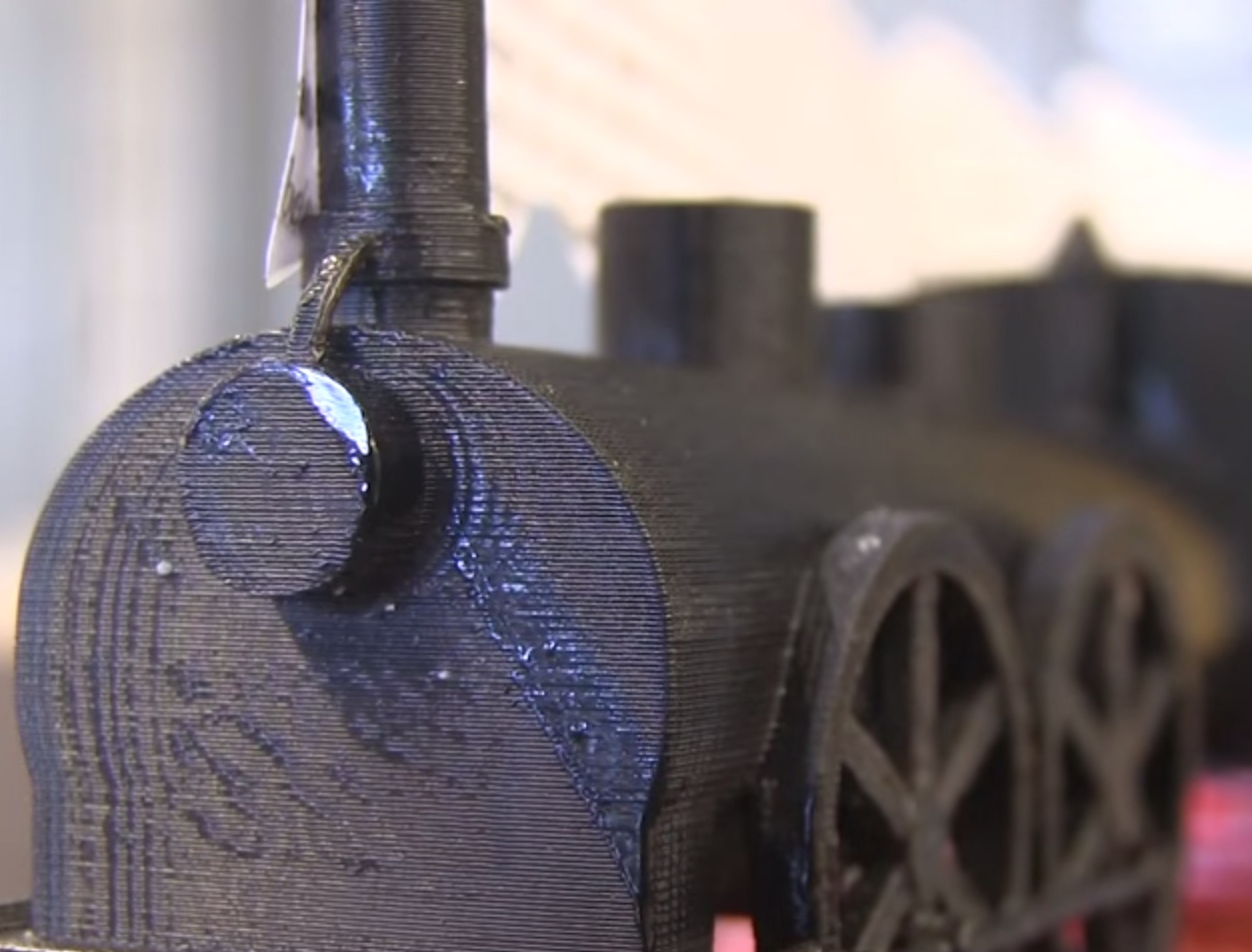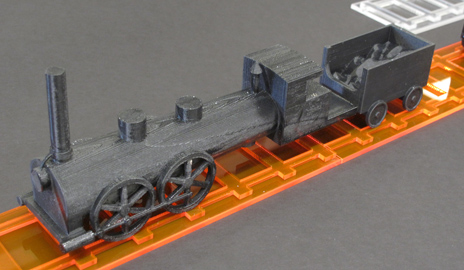
Yale assistant professor of French Morgane Cadieu transformed a literary description of a train into a real 3D print. But she’s demonstrated a barrier to 3D printing by doing so.
The project focused on Emile Zola’s 1890 novel “La Bête humaine” (“The Beast Within”), in which a train is described in intricate detail. Evidently the novel was written at a time when writers were experimenting with “realism”, generating the now-excessive engineering-like descriptions.
Cadieu believed she could cause her class to recognize the importance of “close reading” by using Zola’s descriptions to develop and print a 3D model of the train in the story. This required the class to not only read the French text closely, but also translate to English and then to engineering specifications that ultimately were 3D modeled into the train shown above.

It’s a wonderful exercise that could likely be attempted only with certain literary works, as most leave out many details, allowing the reader to mentally create a realistic story vision themselves.
But here’s the thing: the class soon realized that the descriptions, while evoking the “flavor” of the train, did not actually produce a truly feasible machine. The engine’s description, for example, included only the two large front wheels, but said nothing about the rear wheels. The class decided to “go with the description” and left them out, but it’s not likely the train would travel far without appropriate wheels – and innumerable more engineering features.
To us, this visibly demonstrates the difficult barrier that 3D printing must overcome: the general public wants “a thing” but is unable to easily describe it in sufficient detail for a feasible design to be created. In fact, one of the world’s finest writers, Emile Zola, was unable to do so and Cadieu proved it.
The production of a 3D print continues to require knowledge of 3D design and use of 3D modeling software, which, unfortunately, is still beyond the reach of most of the public.
For now, the barrier to general use remains the ability of the public to generate 3D models suitable for printing. Until that is overcome, we’re likely to see more action in the industrial 3D printer market.
Via Yale

